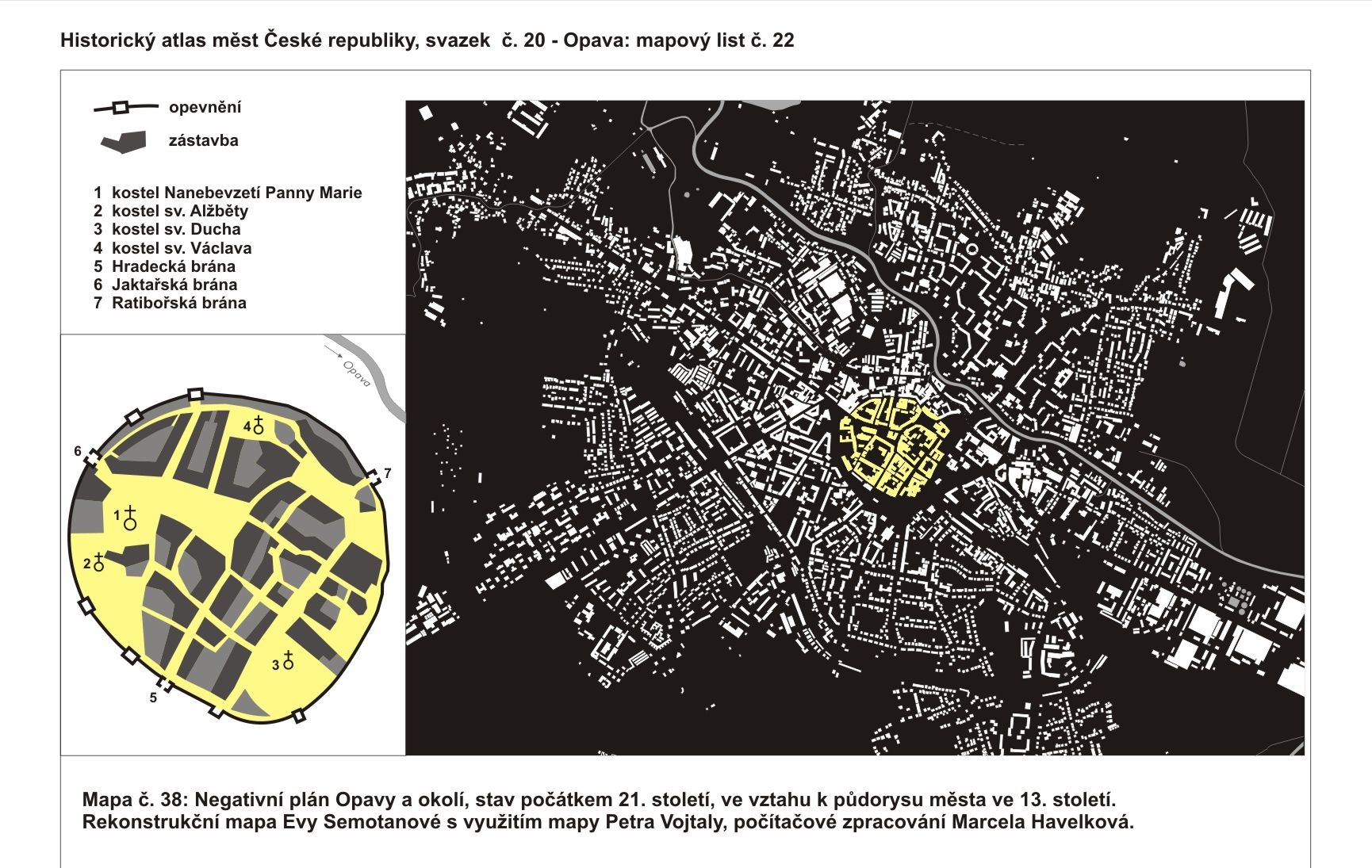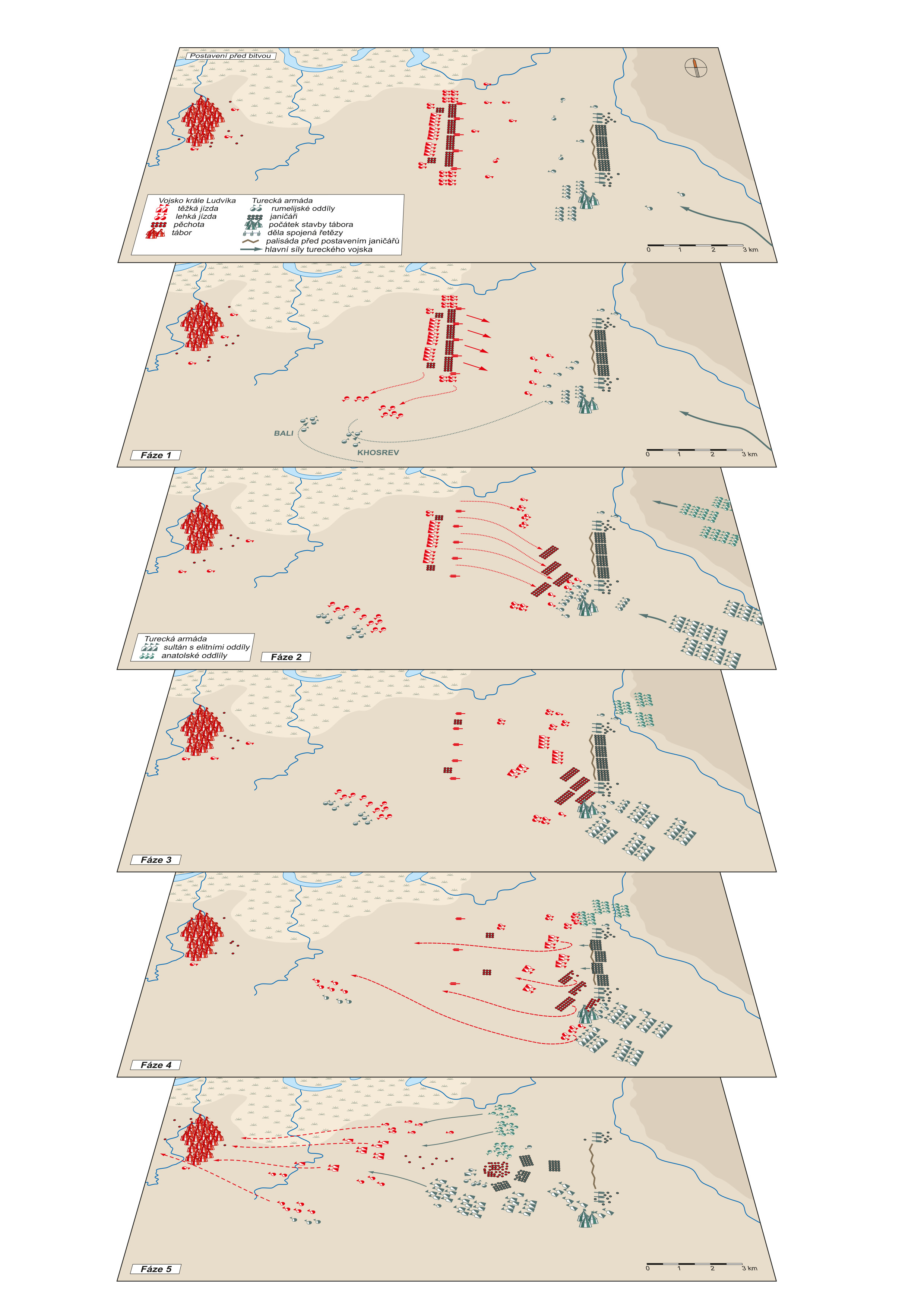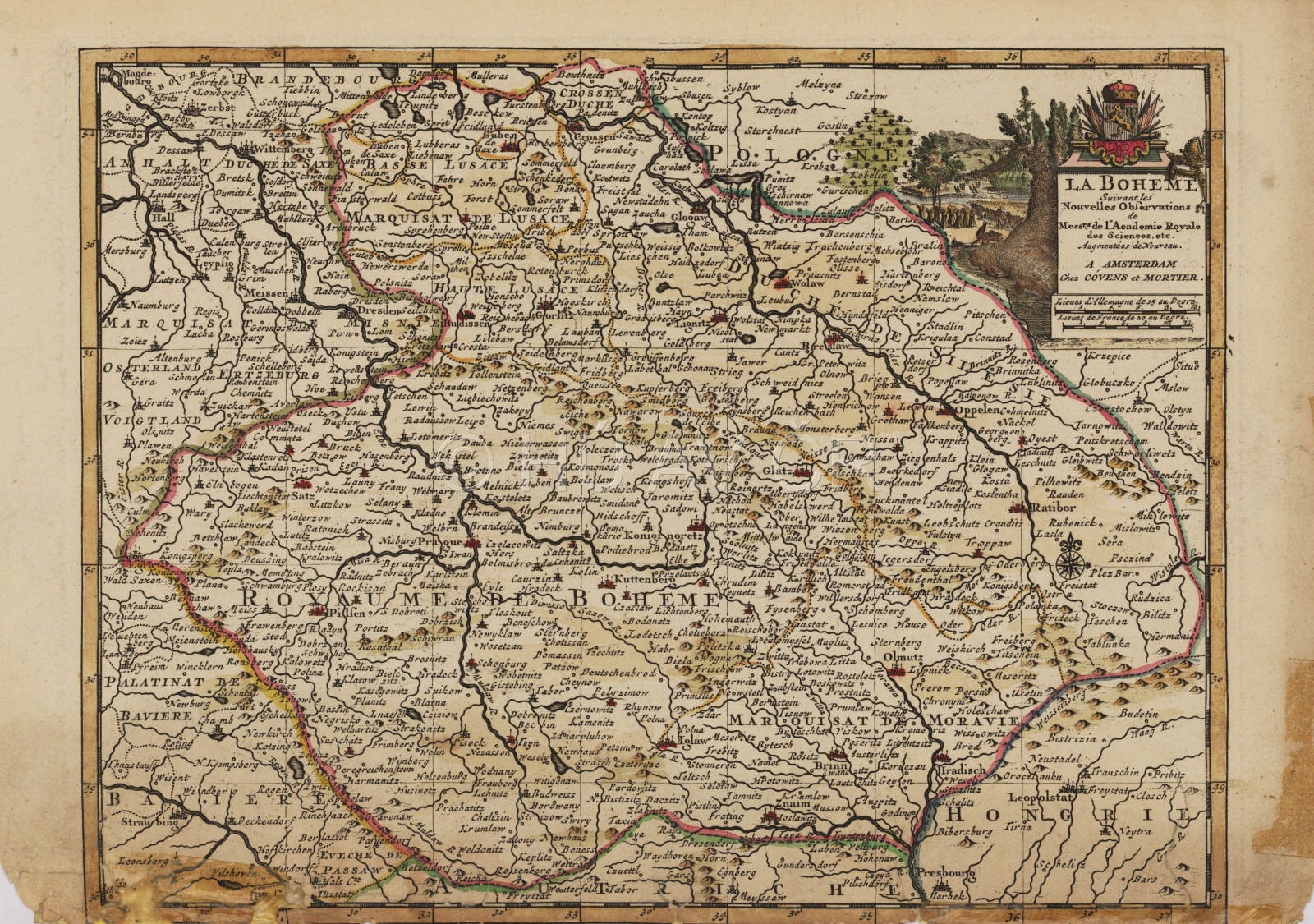The Czech state under Přemyslid Ottokar II
The Czech state experienced greater territorial expansions in the second half of the 13th and the early 14th centuries. The expansionary policy of Přemyslid Ottokar I, motivated by an effort to strengthen the family and ruling power, was aimed at the south. In 1251, Přemyslid gained Upper and Lower Austria, Styria (by 1254 and again in 1260), Pitten in 1253, Carinthia in 1269, Carniola and most of Friuli (1270).To the west of Bohemia, he gained the Cheb region for ten years (1266−1276).However, he had to resign on all these territories in favour of Rudolf I of Bohemia in 1276.

Negative plan of Opava in relation to the town's top view from the 13th century, Historical Towns Atlas, Vol., No. 20, Opava, Eva Semotanová and Marcela Havelková
References
Sommer, P. ‒ Třeštík, D. ‒ Žemlička, J.: Přemyslovci: Budování českého státu. Praha 2009;
Žemlička, J.: Přemysl Otakar II.: král na rozhraní věků. Praha 2011;
Semotanová, E. ‒ Cajthaml, J. a kol.: Akademický atlas českých dějin. Praha 2014, 2. akt. vydání 2016.

This work is licensed under a Creative Commons BY-NC-ND 4.0
The Czech state under Wenceslas II and Wenceslas III
Wenceslas II turned his power interests to the northeast and southeast. In 1290, he re-gained Kłodzko and between 1289 and 1292, he gradually gained control over Bytom, Opole, Cieszyn Silesia, Krakow and in 1291 the Cheb region. In 1296, however, he definitely lost the rest of Vitoraz, which was gained by Rudolph I of Bohemia. As the King of Poland, Wenceslas II extended his lands with Greater Poland (1300−1306) and subsequently received the Hungarian crown in 1301 for his son Wenceslas III. The emerging Přemyslid composite state collapsed with the death of Wenceslas III, the last of the Přemyslid dynasty in 1306.

Aerial image of the Bezděz Castle from the second half of the 13th century where Wenceslas II, the future King of Bohemia was imprisoned with his mother Kunhuta, Martin Gojda, Institute of Archaeology, CAS
References
Sommer, P. ‒ Třeštík, D. ‒ Žemlička, J.: Přemyslovci: Budování českého státu. Praha 2009;
Semotanová, E. ‒ Cajthaml, J. a kol.: Akademický atlas českých dějin. Praha 2014, 2. akt. vydání 2016;
Žemlička, J.: Do tří korun. Poslední rozmach Přemyslovců (1278 ‒ 1301) , Praha 2017.

This work is licensed under a Creative Commons BY-NC-ND 4.0
The Czech state in the Luxembourg period
Significant territorial transformations of the Czech state are connected with the Luxembourg dynasty on the Bohemian throne, in particular the dynastic policy of Charles IV. The term 'Lands of the Bohemian Crown', or Corona regni Bohemiae was used under the reign of Charles IV (first by John of Bohemia in 1329 who thus referred to states incorporated under his reign, namely Moravia and the Kingdom of Bohemia. After the death of Charles IV, Wenceslas IV lost several smaller regions, but the territorial complex of Bohemia, Moravia, Silesia and Lusatia survived until the first half of the 17th century.

Charles (Stone) Bridge built in Prague in the second half of the 14th century within the building activities of Charles IV. Photo Eva Semotanová
References
Antonín, R. ‒ Bobková, L. ‒ Šmahel, F. (eds.): Lucemburkové: Česká koruna uprostřed Evropy. Praha 2012;
Semotanová, E. ‒ Cajthaml, J. a kol.: Akademický atlas českých dějin. Praha 2014, 2. akt. vydání 2016;
Bobková, L.: Jan Lucemburský: Otec slavného syna. Praha 2018.

This work is licensed under a Creative Commons BY-NC-ND 4.0
The Czech state under George of Poděbrady
In the 15th century, territorial modifications of the Czech state took place mostly within the uneven personal unions, under Sigismund of Luxembourg with Hungary (1436-1437) and under Albert of Austria (1437−1439).George of Poděbrady regained some of the foreign fiefs and Lower Lusatia in 1462, but without areas around Cottbus and Peitz. The regions of Opava and Krnov gradually started to be attached to the Duchies of Silesia. In 1468, George was forced to hand control over Moravia, both Lusatias and Silesia to Matthias Corvinus.

Václav Brožík, election of George of Poděbrady the King of Bohemia at the Old Town Hall in Prague in 1452 (painting from 1898). Wikimedia Commons.
References
Felcman, O. ‒ Fukala, R.: Poděbradové: Rod českomoravských pánů, kladských hrabat a českých knížat. Praha 2008;
Boubín, J. a kol.: Hledání nové Evropy. Projekt krále Jiřího. Praha 2015;
Semotanová, E. ‒ Cajthaml, J. a kol.: Akademický atlas českých dějin. Praha 2014, 2. akt. vydání 2016.

This work is licensed under a Creative Commons BY-NC-ND 4.0
The Czech state in the Jagiellonian period
In the 15th century, territorial modifications of the Czech state took place mostly within the uneven personal unions, under Vladislaus II and Louis II of Hungary (1490−1526). Vladislaus II of Hungary, much like George of Poděbrady was forced to pass reign over Moravia, both Lusatias and Silesia to Matthias Corvinus for the years 1471−1490 (according to the Olomouc treaty for the years 1478-1490).The Lands of the Bohemian Crown became united after the death of Matthias (1490−1526).The borders were adjusted in the regions of Krosno, Żagań and Zator (today in Poland).


Battle of Mohács where Louis II, the King of Bohemia died in 1526, Jaroslav Synek
References
Janáček, J.: České dějiny. Doba předbělohorská I, 1–2. Praha 1971, 1984;
Macek, J.: Jagellonský věk v českých zemích (1471 ‒ 1526) 1‒4. Praha 1992, 1994, 1998, 1999;
Semotanová, E. ‒ Cajthaml, J. a kol.: Akademický atlas českých dějin. Praha 2014, 2. akt. vydání 2016.

This work is licensed under a Creative Commons BY-NC-ND 4.0
